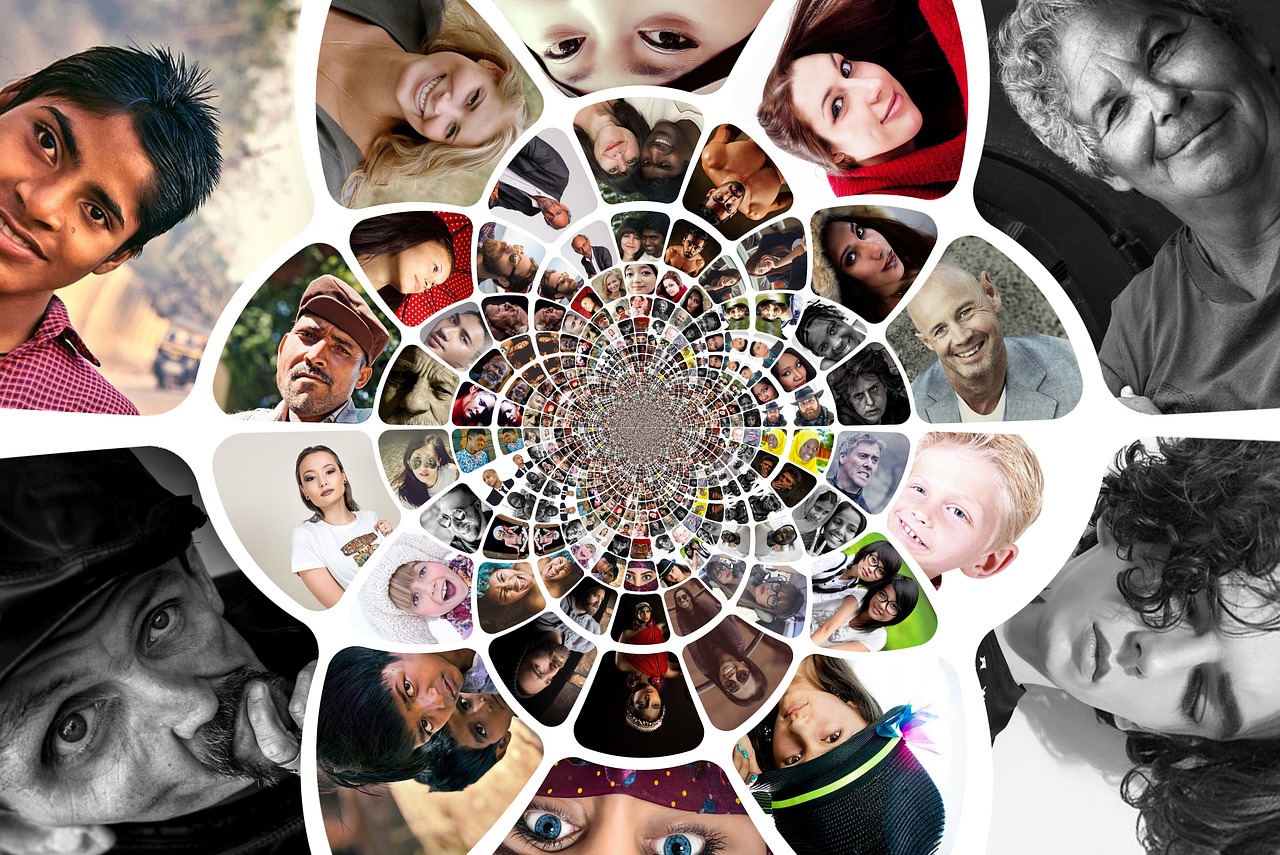Have you ever walked into a room and felt like you’re the square peg in a round hole? You’re not alone. Many of us have experienced that sinking feeling when we realize our mere presence seems to make others squirm in their seats. It’s like we’re dancing to a rhythm nobody else hears, and it can be downright exhausting. But here’s the thing: it’s not the end of the world, and certainly not the end of your social life. Let’s dive into the heart of this social conundrum and explore how we can navigate these choppy waters with grace and confidence.
It’s essential to recognize that everyone has their quirks. Yes, you might have ADHD or anxiety that adds a unique flavor to your interactions, but that’s just part of the rich tapestry that makes you, well, you. The world would be a pretty dull place if we were all carbon copies of some ‘ideal’ social butterfly, wouldn’t it? So, before we go any further, let’s take a moment to celebrate our individuality. It’s the spice of life, after all!
Let’s talk about those moments when you feel like you’re the odd one out. You know, when you’re stuttering through a conversation, and you can almost hear the crickets in the background. It’s tough when you feel like you’re either being babied or outright ignored. But here’s a little secret: most people are too wrapped up in their own insecurities to focus on yours. That’s right, even the most polished speaker has moments of self-doubt. So, take a deep breath and cut yourself some slack.
Feeling more comfortable alone is perfectly okay. There’s a certain peace that comes with solitude, and it’s a great time to recharge and reflect. However, it’s also natural to crave connection and to want to find your tribe—people who get you and make you feel at ease. The trick is to strike a balance between enjoying your own company and opening yourself up to new relationships.
But how do you do that when you can sense the tension in the air? Well, it’s all about reading the room and understanding the signs of discomfort. Psychology tells us that there are telltale body language cues that can clue us in on how others are feeling. Crossed arms, lack of eye contact, fidgeting—they’re all signs that someone might be feeling a bit on edge. Recognizing these signs is the first step to adjusting the dynamic and creating a more relaxed atmosphere.
It’s not just about spotting discomfort, though. It’s also about responding to it in a way that’s empathetic and considerate. If you notice someone checking their phone a little too often or giving monosyllabic responses, it’s not a cue for you to retreat into your shell. Instead, it’s an opportunity to gently shift the conversation to lighter topics or to simply give them the space they might need. Remember, it’s not about changing who you are; it’s about being mindful of the energy you bring into a space.

Let’s address the elephant in the room: the desire to change. Wanting to grow and improve is a fantastic mindset, but it’s important to approach it with self-compassion. Change doesn’t happen overnight, and it’s not about becoming someone you’re not. It’s about enhancing the person you already are. So, where do you start? Begin by embracing your unique qualities and then work on the areas where you’d like to see some growth—like maybe smoothing out those conversational bumps.
Let’s not forget that sometimes, making people a tad uncomfortable isn’t necessarily a bad thing. It’s a sign that you’re not just blending into the background. Renowned psychologist Dr. Susan Krauss Whitbourne reminds us that discomfort in social situations often stems from internal factors like low self-esteem or social anxiety. It’s not always about you. So, while it’s good to be aware of how you’re affecting others, it’s also crucial not to take on the burden of everyone else’s emotional state.
In the book Not Nice, the author discusses the concept of ‘over-responsibility,’ where you feel compelled to fix everyone’s discomfort. But here’s the kicker: that’s not your job. Your responsibility is to be authentically you, and sometimes that means accepting that not everyone will be comfortable with that. And that’s okay. It’s better to shine at full wattage and be true to yourself than to dim your light for the sake of others’ comfort.
Navigating social discomfort is like learning a new dance. It takes practice, patience, and a whole lot of self-love. But once you get the hang of it, you’ll find that you can move through social situations with a newfound ease. So go ahead, embrace your quirks, and remember that your presence is a gift to the world—awkwardness and all.
Tips for smoother social interactions
Now that we’ve explored the landscape of social discomfort, it’s time to roll up our sleeves and get down to the nitty-gritty of overcoming awkwardness and fostering comfortable connections. It’s about transforming those cringe-worthy moments into opportunities for growth and genuine interaction. So, let’s dive into some strategies that can help you navigate the social seas with a little more finesse and a lot less stress.
Self-awareness is your new best friend. Take a moment to reflect on your own behavior and how it might contribute to the vibe you’re putting out there. Are you inadvertently crossing your own arms or avoiding eye contact? It’s like looking in a mirror; sometimes, we mirror the discomfort we sense in others. By being conscious of your own body language, you can start to make small adjustments that signal openness and ease.
Let’s talk about the art of conversation. It’s not just about what you say, but how you say it. If you’re prone to stuttering or rushing through your words, take a breath. Slow down. It’s not a race. People will wait for you to finish your thoughts, and your calmness can help put them at ease. Practice makes perfect, so don’t shy away from small talk. It’s the training ground for bigger, more meaningful conversations.
Spend more time with those great conversationalists. They’re your comfort zone, but they’re also your springboard. Observe how you interact with them and what makes those exchanges flow smoothly. Then, try to replicate that ease in more challenging social settings. It’s like building a muscle; the more you use it, the stronger it gets.
Let’s tackle the elephant in the room: your ADHD and anxiety. These aren’t flaws; they’re facets of who you are. Embrace them. There are countless successful, charismatic individuals who thrive despite—and sometimes because of—their ADHD or anxiety. It’s about finding strategies that work for you, like mindfulness or structured routines, to help manage these aspects of your life. They don’t define you, but they can empower you when you learn to harness their energy.
When it comes to making others comfortable, it’s a dance. You step forward with your authenticity, and you step back with your empathy. If you sense someone’s discomfort, acknowledge it without making a big deal out of it. A simple ‘Hey, I noticed you seem a bit off today, anything you want to talk about?’ can go a long way. It shows you care without putting pressure on them to open up.
And don’t forget to take a break when you’re feeling tense. A quick walk, some deep breaths, or a moment of solitude can reset your social battery. There’s no shame in stepping away to regroup. When you return, you’ll likely feel more composed and ready to engage.
Let’s not forget the power of humor. Laughter is a universal language, and a well-timed joke can cut through awkwardness like a hot knife through butter. Just be sure it’s appropriate and not at someone else’s expense. Self-deprecating humor, when used sparingly, can also be disarming and relatable.
Another key strategy is to find common ground. People love talking about their interests, so ask questions and listen—really listen. When you find that shared passion or topic, the conversation will flow more naturally. It’s like discovering a secret passage to a hidden garden of easy dialogue.
Be patient with yourself. Change doesn’t happen overnight. Celebrate the small victories, like making someone smile or getting through a conversation without stuttering. These moments are your stepping stones to becoming the socially savvy person you aspire to be.
In wrapping up, let’s paint a picture of the social butterfly you’re becoming. You’re someone who walks into a room with a quiet confidence, armed with the knowledge that you have the tools to navigate any social waters. You’re not afraid to be yourself, quirks and all, because you know that’s what makes you memorable. You’re considerate of others’ feelings, but you’re not carrying the weight of their comfort on your shoulders. You’re the master of your own social destiny, dancing to the rhythm of your own life’s music.
Go ahead, take the plunge into the social whirlpool. With each stroke, you’ll find yourself swimming with more ease, surrounded by a community of people who appreciate the unique and wonderful person you are. And remember, in the grand tapestry of life, your thread is vibrant, necessary, and utterly irreplaceable.





